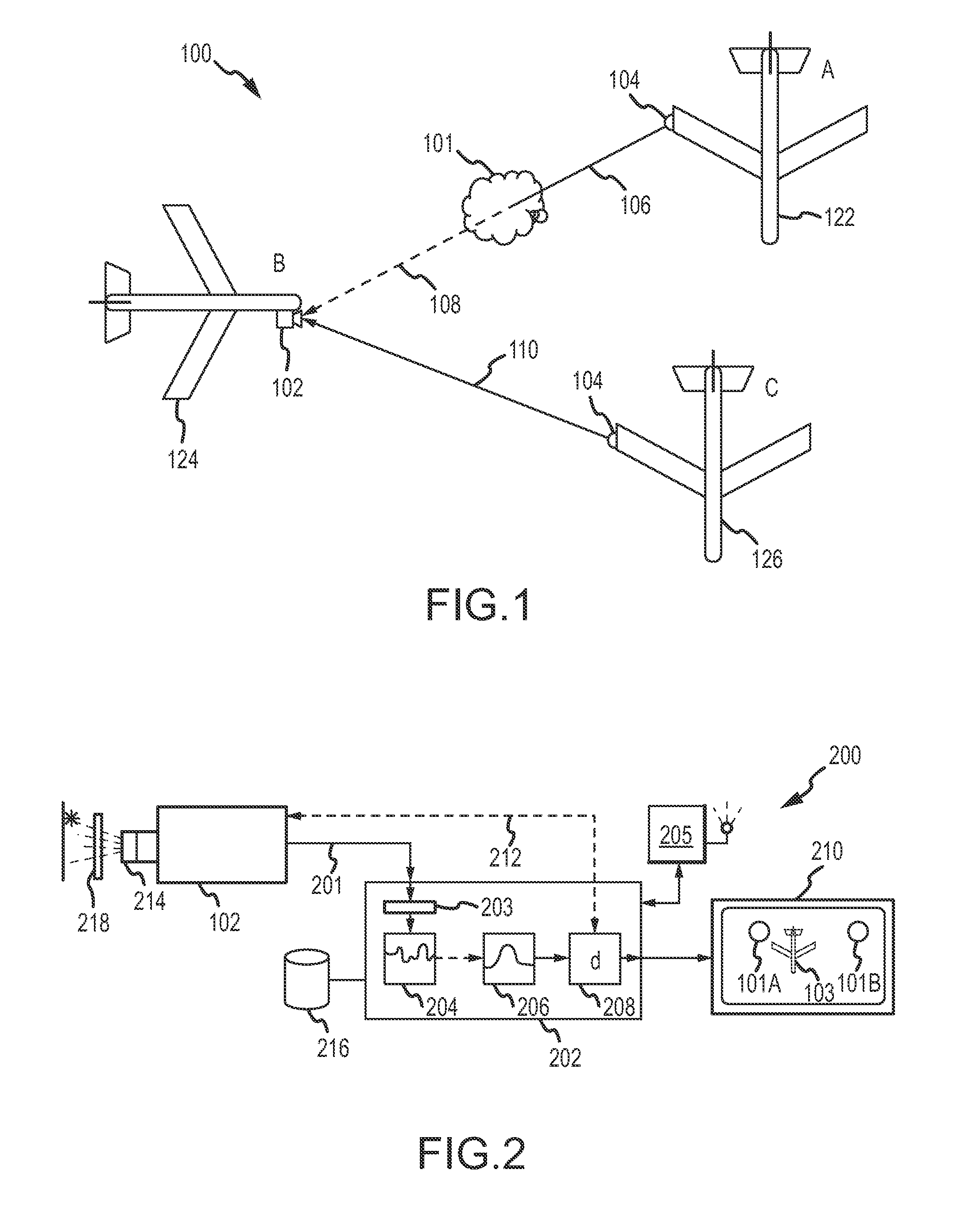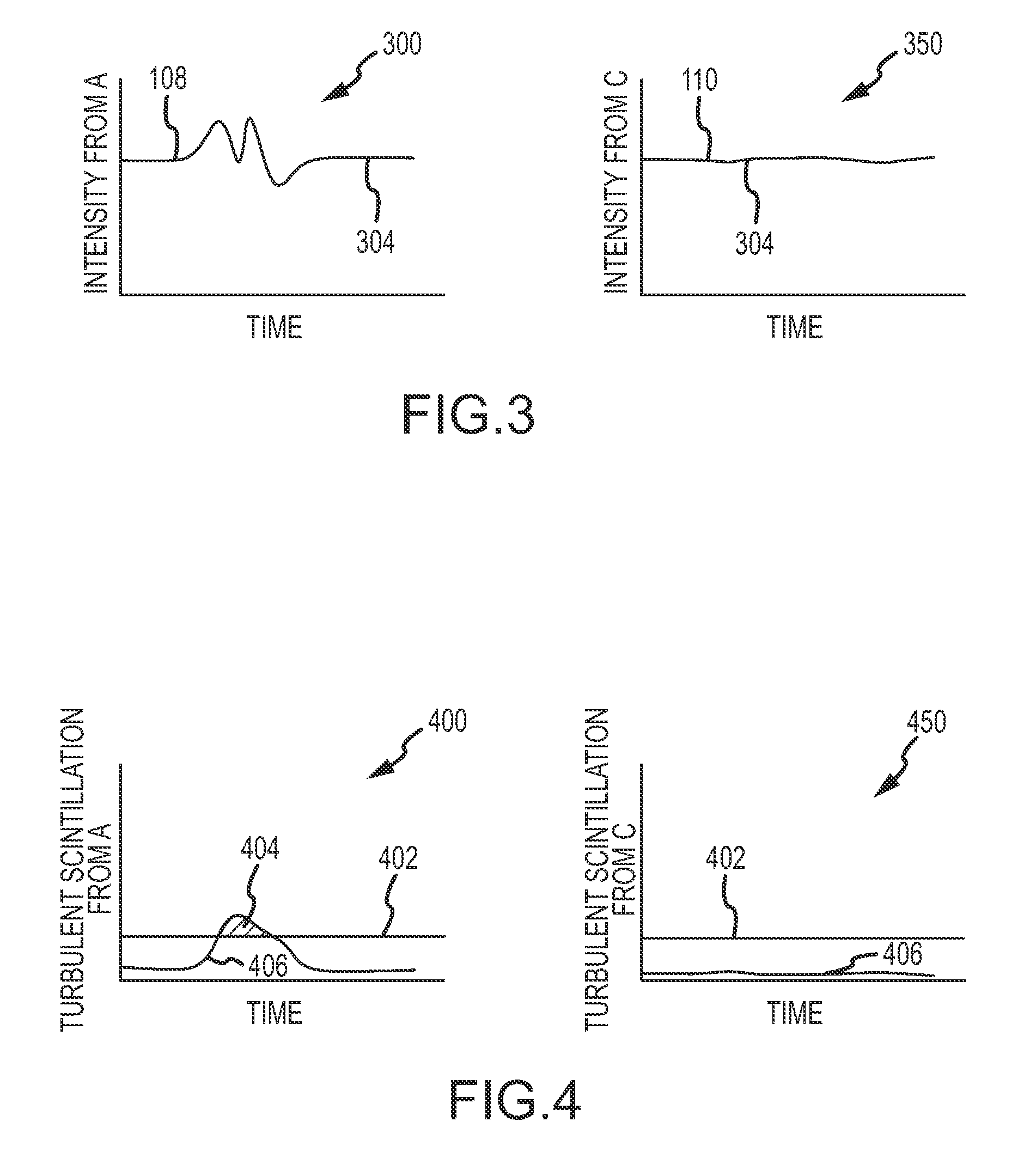System and methods for detecting turbulence based upon observations of light scintillation
a technology of light scintillation and system, applied in the field of system and technique for detecting turbulence in the atmosphere, can solve the problems of turbulence costing us airlines over $100 million per year in expense and loss of revenue, and poses a threat to aircraft damage,
- Summary
- Abstract
- Description
- Claims
- Application Information
AI Technical Summary
Benefits of technology
Problems solved by technology
Method used
Image
Examples
Embodiment Construction
[0013]The following detailed description is merely exemplary in nature and is not intended to limit the described embodiments or the application and uses of the described embodiments. Furthermore, there is no intention to be bound by any expressed or implied theory presented in the preceding technical field, background, brief summary or the following detailed description.
[0014]When light passes through the earth's atmosphere, differences in air density that can cause turbulence can also affect the amplitude and / or frequency of the light, thereby giving the light a scintillating appearance. Like stars “twinkling” in the night sky, lights observed though turbulent air have detectible scintillations that are generally not found in light passing though relatively calm air. By observing and quantifying this scintillation, then, turbulence can be remotely detected in clear air without the need for an aircraft to experience the turbulence firsthand. Further, because light has a relatively ...
PUM
 Login to View More
Login to View More Abstract
Description
Claims
Application Information
 Login to View More
Login to View More - R&D
- Intellectual Property
- Life Sciences
- Materials
- Tech Scout
- Unparalleled Data Quality
- Higher Quality Content
- 60% Fewer Hallucinations
Browse by: Latest US Patents, China's latest patents, Technical Efficacy Thesaurus, Application Domain, Technology Topic, Popular Technical Reports.
© 2025 PatSnap. All rights reserved.Legal|Privacy policy|Modern Slavery Act Transparency Statement|Sitemap|About US| Contact US: help@patsnap.com



